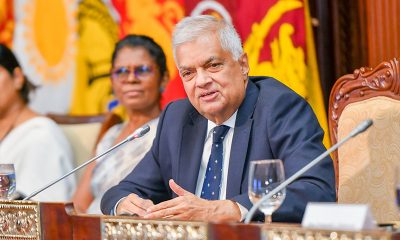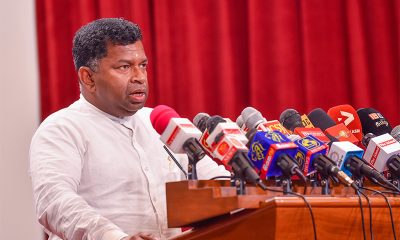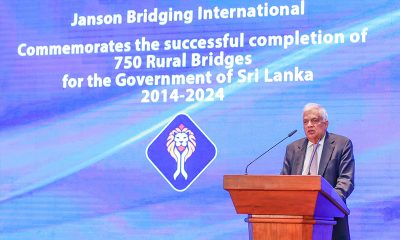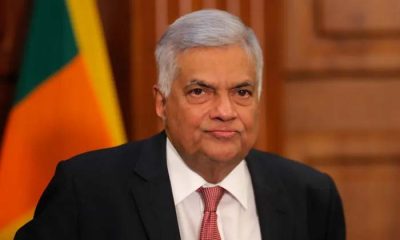Features
Neutral foreign policy in practice
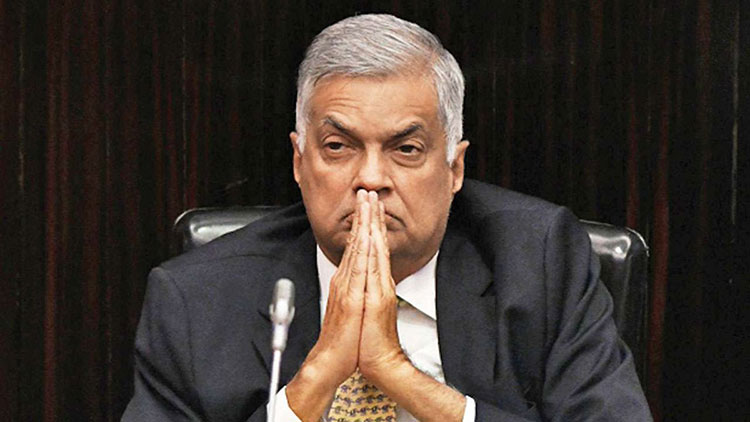
by Neville Ladduwahetty
President Ranil Wickremesinghe has repeatedly declared that Sri Lanka’s foreign policy is neutral. However, he and his government, meaning the Foreign Ministry in particular, has not elaborated on how a policy of neutrality works in practice. Notwithstanding this lacuna, the policy of neutrality as the foreign policy was first adopted by former President Gotabaya Rajapaksa during his acceptance speech, perhaps, influenced by the six foreign policy options presented in an article titled “Independence: Its meaning and a direction for the future” (Neville Ladduwahetty, The Island, 14 Feb., 2019). Despite the fact that the policy of neutrality has been accepted by two Presidents and the current Prime Minister Dinesh Gunawardena, on grounds that it legitimately permits Sri Lanka to be free from getting entangled in major power rivalries, members of this government still publicly announce their preference for a Non-Aligned foreign policy.
LACK of CONSISTENCY
The lack of consistency has manifested itself in several instances. For instance, despite the Policy of Neutrality, an assurance given by the President to India’s Prime Minister was that Sri Lanka would factor in the security concerns of India in the implementation of the Policy of Neutrality. In the background of such assurances India did not hesitate to raise objections when a Chinese Research Ship, with surveillance capabilities, sought permission to dock at a Sri Lankan Port. However, because India could not present sufficiently valid grounds for its objections, Sri Lanka stood by its decision to permit the Chinese ship to enter Sri Lankan waters; thus living by its commitment to the Policy of Neutrality.
It is reported that the Chinese Embassy is again seeking permission for Shi Yan 6 to enter Sri Lanka’s Exclusive Economic Zone from October to November 2023. It is reported that Sri Lanka is considering this request. The practice of considering such requests on a case by case basis should stop. After the previous experience, the Defence Ministry, together with the Foreign Ministry, should have developed a Standard Operating Procedure in keeping with the Policy of Neutrality to handle requests relating to scientific studies or any other capabilities that could be a threat to the inviolability of Sri Lanka’s territory as a declared Neutral State and circulated it among the Foreign Missions. Such an exercise would convey how the Policy of Neutrality operates in practice.
On the other hand, Sri Lanka failed to live by its Policy of Neutrality when it conceded to the objections raised by India for the construction of a Solar Power Plant on the Island of Delft on grounds that it was a threat to the security of India without any elaboration, despite it being a contract offered by the Asian Development Bank after calling for international tenders. Sri Lanka did not question the grounds for the objections. Instead, it caved in without question, thus compromising its Policy of Neutrality.
The most recent manifestation of the lack of consistency was when the President signed 5 MOUs with India, all of which was to advance connectivity with Sri Lanka to the point of integration with India. The Policy of Neutrality flies in the face of such undiluted integration with one country at the expense of its relations with other countries, thus making a mockery of the credibility of Sri Lanka, its leaders and the dignity of its Peoples.
The perception that the current economic crisis justifies Sri Lanka accepting grants and lines of credit from India or from any other country should be seen as an opportunity by any country to exploit Sri Lanka’s current economic weakness to further its own interests by controlling the destiny of Sri Lanka. This after all, is not looking at a gift horse in the mouth. It is nothing but a Trojan horse that demonstrates how unadulterated realpolitik works. The reality is that India took the initiative to lend a hand to Sri Lanka during its hour of need in order to prevent any other State from lending a hand to Sri Lanka that is in its own backyard.
PRINCIPLES and DUTIES of a
NEUTRAL STATE
Based on an ICRC Publication on Neutrality, June 2022.
The Introduction of this publication states: “The sources of the international law of neutrality are customary international law and, for certain questions, international treaties, in particular the Paris Declaration of 1856, the 1907 Hague Convention No. V respecting the Rights and Duties of Neutral Powers and Persons in Case of War on Land, the 1907 Hague Convention No. XIII concerning the Rights and Duties of Neutral Powers in Naval War, the four 1949 Geneva Conventions and Additional Protocol I of 1977.
”1. PRINCIPLES AND DEFINITIONS
THE PRINCIPLE OF INVIOLABILITY
The territory of a neutral State is inviolable. It is prohibited to commit any act of hostility whatsoever on such territory. Neutrality describes the formal position taken by a State which is not participating in an armed conflict or which does not want to become involved. This status entails specific rights and duties. On the one hand, the neutral State has the right to stand apart from and not be adversely affected by the conflict. On the other hand, it has a duty of non-participation and impartiality.
Neutral space comprises the national territory of the neutral State, its territorial waters and its national air space. Neutral persons are nationals of neutral States. They lose their neutral status if they commit hostile acts against a belligerent. Individuals may join the armed forces of a belligerent party, but then they also lose their neutral status. They still have all the guarantees of protection that a member of those forces would enjoy, and therefore are entitled to POW status if they are subsequently captured. If, however, they can be defined as mercenaries, whom we covered in an earlier lesson, they do not have the right to be considered as combatants or POWs.
As long as their home State maintains normal diplomatic relations with the belligerent State they are living in or visiting, neutral persons are to be treated in the same way as they would be in peacetime. They remain under diplomatic protection. If there are no such diplomatic relations, neutral persons are entitled to be treated as protected persons under the Fourth Geneva Convention. It makes no difference to their status if they are civilians or members of the armed forces of the neutral State to which they belong”.
“3. THE DUTIES OF NEUTRAL STATES (Ibid)
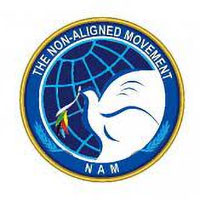 Policy and instructions – the neutral State must also take measures to ensure and enforce the protection of its neutrality in the neutral space for which it is responsible in relation to the belligerent parties and, in particular, their armed forces. To obtain neutral status, the State does not have to make a formal declaration, nor do other States or parties formally have to recognize such status. A formal declaration will only have the effect of making Neutral status better known.
Policy and instructions – the neutral State must also take measures to ensure and enforce the protection of its neutrality in the neutral space for which it is responsible in relation to the belligerent parties and, in particular, their armed forces. To obtain neutral status, the State does not have to make a formal declaration, nor do other States or parties formally have to recognize such status. A formal declaration will only have the effect of making Neutral status better known.
The armed forces of the neutral State also require clear instructions on how they are to operate in relation to the defence of their territory and in dealing with incursions. For isolated and accidental violations of neutral space, the instructions might include the need to issue warnings or give a demonstration of force. For increasingly numerous and serious violations, a general warning might be called for and the use of force stepped up.
Particular obligations – the neutral State must ensure respect for its neutrality, if necessary, using force to repel any violation of its territory. Violations include failure to respect the prohibitions placed on belligerent parties with regard to certain activities in neutral territory, described above. The fact that a neutral State uses force to repel attempts to violate its neutrality cannot be regarded as a hostile act. If the neutral State defends its neutrality, it must however respect the limits which international law imposes on the use of force. The neutral State must treat the opposing belligerent States impartially.
This obligation does not mean that a State is bound to treat the belligerents in exactly the same way. It entails a prohibition on discrimination.
It forbids only differential treatment of the belligerents which in view of the specific problem of armed conflict is not justified. Therefore, a neutral State is not obliged to eliminate differences in commercial relations between itself and each of the parties to the conflict at the time of the outbreak of the armed conflict. It is entitled to continue existing commercial relations. A change in these commercial relationships could, however, constitute taking sides inconsistent with the status of neutrality.
A neutral state must never assist a party to the armed conflict, in particular it must not supply warships, ammunition or other war materials directly or indirectly to a belligerent power, but otherwise its trade with the belligerent States remains unaffected”.
The material presented above embodies internationally recognized practices that should be adopted by a neutral state.
Therefore, as a neutral state it is appropriate that issues relating to the armed conflict that ceased in May 2009 are also addressed under provisions of international humanitarian law applicable to non-international armed conflict as codified in additional protocol ii of 1977.
THE ROLE of DOMESTIC POLICY in
FOREIGN POLICY
The general understanding is that the focus of Foreign Policy is how a State maintains friendly relations and cooperation with other States in the pursuit of its national interests. However, the fact that origins of national interests are influenced and often driven by domestic interests is not given the attention it deserves. For instance, a key national interest is food security. Therefore, the domestic policy should be how to implement agricultural policies that ensure food security in a manner that assures access to food at affordable prices.
However, food security is possible only if there is sufficient water. This is where irrigation becomes a vital component in a domestic policy of food security. These issues were presented in the article referred to earlier that advocated Neutrality as the appropriate Foreign Policy for Sri Lanka in the context of geopolitical rivalries titled “Independence: Its meaning and a direction for the future”. The relevant section with appropriate updates from this article is presented below:
“Since Sri Lanka possesses skills, technical knowhow and materials locally, except for a small component of imported items to design and build infrastructure projects relating to water supply, highways and high-rise structures, and the only shortcoming is finance, the government should facilitate financing arrangements through local banks, through Treasury Bills or through specific taxes instead of taking bilateral loans from any of the major powers blocks. If Sri Lanka is compelled to take loans to implement infrastructure projects to further its economy, at least Sri Lanka should insist whenever possible that the design and construction of such projects should, as a policy, be undertaken by Sri Lanka. However, there are projects beyond the capability of local talent in fields such as power generation and value addition of raw materials that are currently being exported. One way of attracting Foreign Direct Investment is for the government to encourage and facilitate the emerging class of astute entrepreneurs to engage with the private sector in countries that have the know-how to implement those projects that are beyond the capabilities of local talent”.
“In the meantime, the government should focus on food security by giving every possible incentive locally, not only because tried and tested skills and knowhow are available locally through centuries of experience but also because it is the fastest and most effective way to improve the livelihood and wellbeing of the bulk of the nation. Such traditional agricultural practices should be coupled with up to date technologies relating to transport, packaging and processing of agricultural products together with marketing the end products for local consumption as well as export’.
“Since water is the most vital input for agriculture the government should undertake a programme to restore the ancient tanks that dot the landscape of Sri Lanka as part of food security, because the consequence of climate change is the certainty that it is not possible to predict when and where it would rain. As a key feature of such a programme, the upper elevations that form the catchment area of the major rivers in Sri Lanka should be declared a natural reserve under the control of the central government and reforested to harvest precipitation from either of the monsoons”.
“A development strategy that should run parallel with food security should be the development of a whole range of organic agricultural products including spices outside the range related to food security e.g. horticulture, flowers, ornamental plants and foliage along with spices and herbal medicinal plants not only for local consumption but also specifically targeted for export. A few pioneering entrepreneurs have already embarked on this field of activity but it is only a serious and concerted thrust undertaken by the government as an integral part of a National Economic Policy to develop agriculture and agriculture-based products that could take this field of economic activity far beyond what it is today. Each of the 24 Districts should be declared the epicenter of such agricultural endeavours based on targets set by the Center. Such a strategy would contribute directly to the human development of a hitherto neglected section of the rural population with the minimum of external input”.
It is evident from the foregoing that a whole range of Economic Policies could emerge based on the Domestic Policies adopted. These Domestic Policies would contribute immeasurably to Sri Lanka being free of the dependence on imported agricultural products. For instance, the declaration by the Minister of Agriculture that Sri Lanka imports nearly 2 Billion Dollars of fruits and vegetables is a shameful admission of a failed and flawed Domestic Policies. In such a background to talk about competitive export oriented Economic Policies is to reverse priorities.
An issue that is of vital importance to a State that practices Neutrality as its stated Foreign Policy is that it cannot afford to entertain unsolicited infrastructure projects such as the Light Rail Project from Japan and the offshore Nuclear Power Plants from Russia. Since the actions of a Neutral State must be neutral and therefore act free of any preferences or biases in the implementation of its Economic Policies or any commercial activities, its engagement with other States should be transparent and open. Furthermore, the initiative to implement such projects should be formulated by the Neutral State as part of its Domestic Policy.
CONCLUSION
Now that the President and Prime Minister of Sri Lanka have declared that Sri Lanka’s foreign policy is neutral, the material presented herein gives the internationally accepted norms by which a Neutral State should conduct its Foreign Relations and in turn how other States should respect its Policy of Neutrality. One vital aspect of such a norm is the respect of other States for the inviolability of the territory of the Neutral State and its integrity.
The Policy of Neutrality is the best defence Sri Lanka has to deter global powers from attempting to get control of Sri Lanka because of its strategic location on grounds internationally recognized norms of conduct applicable to a Neutral State. The extent to which Sri Lanka succeeds in retaining its Freedoms and Independence amidst such challenges depends on how Sri Lanka conducts its Foreign Relations as a Neutral State.
The most recent concern to the Policy of Neutrality is the request by the Chinese Research Ship to enter Sri Lankan waters to carry out research studies in collaboration with National Aquatic Resources Research and Development Agency (NARA); a practice they have been engaged in since 2017 after signing an MOU. The MOU has lapsed and is due for renewal. The recommendation is that if such concerns are to avoided the Defence Ministry together with the Foreign Ministry should develop a Standard Operating Procedure relating to the entry of any sea going vessel to enter Sri Lankan waters and circulate it among the Foreign Missions so that they are forewarned about the internationally recognized rights of a Neutral State.
The other aspect addressed is the symbiotic relationship that exists between Domestic Policies and Foreign Policies. In this regard the recommendation advocated is to seriously and strenuously focus on developing internal strengths particularly in the fields of agriculture to ensure food security and in the field of horticulture for export. In short, the Domestic Policies should focus on reducing imports in all fields that Sri Lanka can free itself of external dependence. The fact that Sri Lanka imports fruits and vegetables is a shame that Sri Lanka can do without.
As a Neutral State, Sri Lanka should conduct its Foreign Relations in a manner that underscores its core civilizational value of self-reliance to meet future challenges.
Features
The heart-friendly health minister
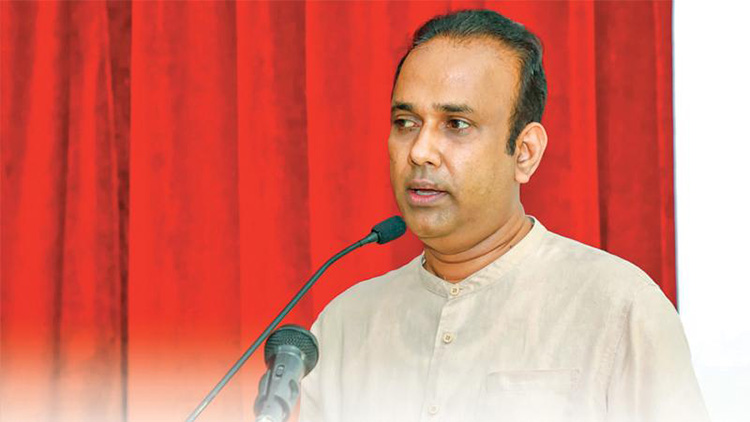
by Dr Gotabhya Ranasinghe
Senior Consultant Cardiologist
National Hospital Sri Lanka
When we sought a meeting with Hon Dr. Ramesh Pathirana, Minister of Health, he graciously cleared his busy schedule to accommodate us. Renowned for his attentive listening and deep understanding, Minister Pathirana is dedicated to advancing the health sector. His openness and transparency exemplify the qualities of an exemplary politician and minister.
Dr. Palitha Mahipala, the current Health Secretary, demonstrates both commendable enthusiasm and unwavering support. This combination of attributes makes him a highly compatible colleague for the esteemed Minister of Health.
Our discussion centered on a project that has been in the works for the past 30 years, one that no other minister had managed to advance.
Minister Pathirana, however, recognized the project’s significance and its potential to revolutionize care for heart patients.
The project involves the construction of a state-of-the-art facility at the premises of the National Hospital Colombo. The project’s location within the premises of the National Hospital underscores its importance and relevance to the healthcare infrastructure of the nation.
This facility will include a cardiology building and a tertiary care center, equipped with the latest technology to handle and treat all types of heart-related conditions and surgeries.
Securing funding was a major milestone for this initiative. Minister Pathirana successfully obtained approval for a $40 billion loan from the Asian Development Bank. With the funding in place, the foundation stone is scheduled to be laid in September this year, and construction will begin in January 2025.
This project guarantees a consistent and uninterrupted supply of stents and related medications for heart patients. As a result, patients will have timely access to essential medical supplies during their treatment and recovery. By securing these critical resources, the project aims to enhance patient outcomes, minimize treatment delays, and maintain the highest standards of cardiac care.
Upon its fruition, this monumental building will serve as a beacon of hope and healing, symbolizing the unwavering dedication to improving patient outcomes and fostering a healthier society.We anticipate a future marked by significant progress and positive outcomes in Sri Lanka’s cardiovascular treatment landscape within the foreseeable timeframe.
Features
A LOVING TRIBUTE TO JESUIT FR. ALOYSIUS PIERIS ON HIS 90th BIRTHDAY

by Fr. Emmanuel Fernando, OMI
Jesuit Fr. Aloysius Pieris (affectionately called Fr. Aloy) celebrated his 90th birthday on April 9, 2024 and I, as the editor of our Oblate Journal, THE MISSIONARY OBLATE had gone to press by that time. Immediately I decided to publish an article, appreciating the untiring selfless services he continues to offer for inter-Faith dialogue, the renewal of the Catholic Church, his concern for the poor and the suffering Sri Lankan masses and to me, the present writer.
It was in 1988, when I was appointed Director of the Oblate Scholastics at Ampitiya by the then Oblate Provincial Fr. Anselm Silva, that I came to know Fr. Aloy more closely. Knowing well his expertise in matters spiritual, theological, Indological and pastoral, and with the collaborative spirit of my companion-formators, our Oblate Scholastics were sent to Tulana, the Research and Encounter Centre, Kelaniya, of which he is the Founder-Director, for ‘exposure-programmes’ on matters spiritual, biblical, theological and pastoral. Some of these dimensions according to my view and that of my companion-formators, were not available at the National Seminary, Ampitiya.
Ever since that time, our Oblate formators/ accompaniers at the Oblate Scholasticate, Ampitiya , have continued to send our Oblate Scholastics to Tulana Centre for deepening their insights and convictions regarding matters needed to serve the people in today’s context. Fr. Aloy also had tried very enthusiastically with the Oblate team headed by Frs. Oswald Firth and Clement Waidyasekara to begin a Theologate, directed by the Religious Congregations in Sri Lanka, for the contextual formation/ accompaniment of their members. It should very well be a desired goal of the Leaders / Provincials of the Religious Congregations.
Besides being a formator/accompanier at the Oblate Scholasticate, I was entrusted also with the task of editing and publishing our Oblate journal, ‘The Missionary Oblate’. To maintain the quality of the journal I continue to depend on Fr. Aloy for his thought-provoking and stimulating articles on Biblical Spirituality, Biblical Theology and Ecclesiology. I am very grateful to him for his generous assistance. Of late, his writings on renewal of the Church, initiated by Pope St. John XX111 and continued by Pope Francis through the Synodal path, published in our Oblate journal, enable our readers to focus their attention also on the needed renewal in the Catholic Church in Sri Lanka. Fr. Aloy appreciated very much the Synodal path adopted by the Jesuit Pope Francis for the renewal of the Church, rooted very much on prayerful discernment. In my Religious and presbyteral life, Fr.Aloy continues to be my spiritual animator / guide and ongoing formator / acccompanier.
Fr. Aloysius Pieris, BA Hons (Lond), LPh (SHC, India), STL (PFT, Naples), PhD (SLU/VC), ThD (Tilburg), D.Ltt (KU), has been one of the eminent Asian theologians well recognized internationally and one who has lectured and held visiting chairs in many universities both in the West and in the East. Many members of Religious Congregations from Asian countries have benefited from his lectures and guidance in the East Asian Pastoral Institute (EAPI) in Manila, Philippines. He had been a Theologian consulted by the Federation of Asian Bishops’ Conferences for many years. During his professorship at the Gregorian University in Rome, he was called to be a member of a special group of advisers on other religions consulted by Pope Paul VI.
Fr. Aloy is the author of more than 30 books and well over 500 Research Papers. Some of his books and articles have been translated and published in several countries. Among those books, one can find the following: 1) The Genesis of an Asian Theology of Liberation (An Autobiographical Excursus on the Art of Theologising in Asia, 2) An Asian Theology of Liberation, 3) Providential Timeliness of Vatican 11 (a long-overdue halt to a scandalous millennium, 4) Give Vatican 11 a chance, 5) Leadership in the Church, 6) Relishing our faith in working for justice (Themes for study and discussion), 7) A Message meant mainly, not exclusively for Jesuits (Background information necessary for helping Francis renew the Church), 8) Lent in Lanka (Reflections and Resolutions, 9) Love meets wisdom (A Christian Experience of Buddhism, 10) Fire and Water 11) God’s Reign for God’s poor, 12) Our Unhiddden Agenda (How we Jesuits work, pray and form our men). He is also the Editor of two journals, Vagdevi, Journal of Religious Reflection and Dialogue, New Series.
Fr. Aloy has a BA in Pali and Sanskrit from the University of London and a Ph.D in Buddhist Philosophy from the University of Sri Lankan, Vidyodaya Campus. On Nov. 23, 2019, he was awarded the prestigious honorary Doctorate of Literature (D.Litt) by the Chancellor of the University of Kelaniya, the Most Venerable Welamitiyawe Dharmakirthi Sri Kusala Dhamma Thera.
Fr. Aloy continues to be a promoter of Gospel values and virtues. Justice as a constitutive dimension of love and social concern for the downtrodden masses are very much noted in his life and work. He had very much appreciated the commitment of the late Fr. Joseph (Joe) Fernando, the National Director of the Social and Economic Centre (SEDEC) for the poor.
In Sri Lanka, a few religious Congregations – the Good Shepherd Sisters, the Christian Brothers, the Marist Brothers and the Oblates – have invited him to animate their members especially during their Provincial Congresses, Chapters and International Conferences. The mainline Christian Churches also have sought his advice and followed his seminars. I, for one, regret very much, that the Sri Lankan authorities of the Catholic Church –today’s Hierarchy—- have not sought Fr.
Aloy’s expertise for the renewal of the Catholic Church in Sri Lanka and thus have not benefited from the immense store of wisdom and insight that he can offer to our local Church while the Sri Lankan bishops who governed the Catholic church in the immediate aftermath of the Second Vatican Council (Edmund Fernando OMI, Anthony de Saram, Leo Nanayakkara OSB, Frank Marcus Fernando, Paul Perera,) visited him and consulted him on many matters. Among the Tamil Bishops, Bishop Rayappu Joseph was keeping close contact with him and Bishop J. Deogupillai hosted him and his team visiting him after the horrible Black July massacre of Tamils.
Features
A fairy tale, success or debacle

Sri Lanka-Singapore Free Trade Agreement
By Gomi Senadhira
senadhiragomi@gmail.com
“You might tell fairy tales, but the progress of a country cannot be achieved through such narratives. A country cannot be developed by making false promises. The country moved backward because of the electoral promises made by political parties throughout time. We have witnessed that the ultimate result of this is the country becoming bankrupt. Unfortunately, many segments of the population have not come to realize this yet.” – President Ranil Wickremesinghe, 2024 Budget speech
Any Sri Lankan would agree with the above words of President Wickremesinghe on the false promises our politicians and officials make and the fairy tales they narrate which bankrupted this country. So, to understand this, let’s look at one such fairy tale with lots of false promises; Ranil Wickremesinghe’s greatest achievement in the area of international trade and investment promotion during the Yahapalana period, Sri Lanka-Singapore Free Trade Agreement (SLSFTA).
It is appropriate and timely to do it now as Finance Minister Wickremesinghe has just presented to parliament a bill on the National Policy on Economic Transformation which includes the establishment of an Office for International Trade and the Sri Lanka Institute of Economics and International Trade.
Was SLSFTA a “Cleverly negotiated Free Trade Agreement” as stated by the (former) Minister of Development Strategies and International Trade Malik Samarawickrama during the Parliamentary Debate on the SLSFTA in July 2018, or a colossal blunder covered up with lies, false promises, and fairy tales? After SLSFTA was signed there were a number of fairy tales published on this agreement by the Ministry of Development Strategies and International, Institute of Policy Studies, and others.
However, for this article, I would like to limit my comments to the speech by Minister Samarawickrama during the Parliamentary Debate, and the two most important areas in the agreement which were covered up with lies, fairy tales, and false promises, namely: revenue loss for Sri Lanka and Investment from Singapore. On the other important area, “Waste products dumping” I do not want to comment here as I have written extensively on the issue.
1. The revenue loss
During the Parliamentary Debate in July 2018, Minister Samarawickrama stated “…. let me reiterate that this FTA with Singapore has been very cleverly negotiated by us…. The liberalisation programme under this FTA has been carefully designed to have the least impact on domestic industry and revenue collection. We have included all revenue sensitive items in the negative list of items which will not be subject to removal of tariff. Therefore, 97.8% revenue from Customs duty is protected. Our tariff liberalisation will take place over a period of 12-15 years! In fact, the revenue earned through tariffs on goods imported from Singapore last year was Rs. 35 billion.
The revenue loss for over the next 15 years due to the FTA is only Rs. 733 million– which when annualised, on average, is just Rs. 51 million. That is just 0.14% per year! So anyone who claims the Singapore FTA causes revenue loss to the Government cannot do basic arithmetic! Mr. Speaker, in conclusion, I call on my fellow members of this House – don’t mislead the public with baseless criticism that is not grounded in facts. Don’t look at petty politics and use these issues for your own political survival.”
I was surprised to read the minister’s speech because an article published in January 2018 in “The Straits Times“, based on information released by the Singaporean Negotiators stated, “…. With the FTA, tariff savings for Singapore exports are estimated to hit $10 million annually“.
As the annual tariff savings (that is the revenue loss for Sri Lanka) calculated by the Singaporean Negotiators, Singaporean $ 10 million (Sri Lankan rupees 1,200 million in 2018) was way above the rupees’ 733 million revenue loss for 15 years estimated by the Sri Lankan negotiators, it was clear to any observer that one of the parties to the agreement had not done the basic arithmetic!
Six years later, according to a report published by “The Morning” newspaper, speaking at the Committee on Public Finance (COPF) on 7th May 2024, Mr Samarawickrama’s chief trade negotiator K.J. Weerasinghehad had admitted “…. that forecasted revenue loss for the Government of Sri Lanka through the Singapore FTA is Rs. 450 million in 2023 and Rs. 1.3 billion in 2024.”
If these numbers are correct, as tariff liberalisation under the SLSFTA has just started, we will pass Rs 2 billion very soon. Then, the question is how Sri Lanka’s trade negotiators made such a colossal blunder. Didn’t they do their basic arithmetic? If they didn’t know how to do basic arithmetic they should have at least done their basic readings. For example, the headline of the article published in The Straits Times in January 2018 was “Singapore, Sri Lanka sign FTA, annual savings of $10m expected”.
Anyway, as Sri Lanka’s chief negotiator reiterated at the COPF meeting that “…. since 99% of the tariffs in Singapore have zero rates of duty, Sri Lanka has agreed on 80% tariff liberalisation over a period of 15 years while expecting Singapore investments to address the imbalance in trade,” let’s turn towards investment.
Investment from Singapore
In July 2018, speaking during the Parliamentary Debate on the FTA this is what Minister Malik Samarawickrama stated on investment from Singapore, “Already, thanks to this FTA, in just the past two-and-a-half months since the agreement came into effect we have received a proposal from Singapore for investment amounting to $ 14.8 billion in an oil refinery for export of petroleum products. In addition, we have proposals for a steel manufacturing plant for exports ($ 1 billion investment), flour milling plant ($ 50 million), sugar refinery ($ 200 million). This adds up to more than $ 16.05 billion in the pipeline on these projects alone.
And all of these projects will create thousands of more jobs for our people. In principle approval has already been granted by the BOI and the investors are awaiting the release of land the environmental approvals to commence the project.
I request the Opposition and those with vested interests to change their narrow-minded thinking and join us to develop our country. We must always look at what is best for the whole community, not just the few who may oppose. We owe it to our people to courageously take decisions that will change their lives for the better.”
According to the media report I quoted earlier, speaking at the Committee on Public Finance (COPF) Chief Negotiator Weerasinghe has admitted that Sri Lanka was not happy with overall Singapore investments that have come in the past few years in return for the trade liberalisation under the Singapore-Sri Lanka Free Trade Agreement. He has added that between 2021 and 2023 the total investment from Singapore had been around $162 million!
What happened to those projects worth $16 billion negotiated, thanks to the SLSFTA, in just the two-and-a-half months after the agreement came into effect and approved by the BOI? I do not know about the steel manufacturing plant for exports ($ 1 billion investment), flour milling plant ($ 50 million) and sugar refinery ($ 200 million).
However, story of the multibillion-dollar investment in the Petroleum Refinery unfolded in a manner that would qualify it as the best fairy tale with false promises presented by our politicians and the officials, prior to 2019 elections.
Though many Sri Lankans got to know, through the media which repeatedly highlighted a plethora of issues surrounding the project and the questionable credentials of the Singaporean investor, the construction work on the Mirrijiwela Oil Refinery along with the cement factory began on the24th of March 2019 with a bang and Minister Ranil Wickremesinghe and his ministers along with the foreign and local dignitaries laid the foundation stones.
That was few months before the 2019 Presidential elections. Inaugurating the construction work Prime Minister Ranil Wickremesinghe said the projects will create thousands of job opportunities in the area and surrounding districts.
The oil refinery, which was to be built over 200 acres of land, with the capacity to refine 200,000 barrels of crude oil per day, was to generate US$7 billion of exports and create 1,500 direct and 3,000 indirect jobs. The construction of the refinery was to be completed in 44 months. Four years later, in August 2023 the Cabinet of Ministers approved the proposal presented by President Ranil Wickremesinghe to cancel the agreement with the investors of the refinery as the project has not been implemented! Can they explain to the country how much money was wasted to produce that fairy tale?
It is obvious that the President, ministers, and officials had made huge blunders and had deliberately misled the public and the parliament on the revenue loss and potential investment from SLSFTA with fairy tales and false promises.
As the president himself said, a country cannot be developed by making false promises or with fairy tales and these false promises and fairy tales had bankrupted the country. “Unfortunately, many segments of the population have not come to realize this yet”.
(The writer, a specialist and an activist on trade and development issues . )




